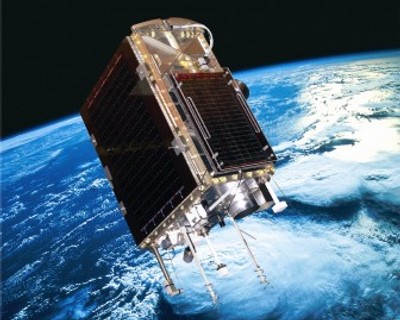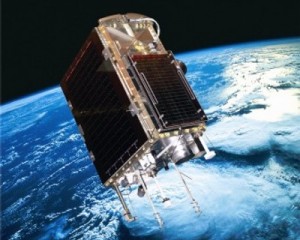
SumbandilaSat, a South African Earth observation microsatellite, ceased to function due to damage it sustained during a solar storm in June 2010. During the storm, the power supply to the satellite’s onboard computer failed, and consequently, the satellite stopped transmitting images to the ground. The satellite’s developer, SunSpace, has abandoned efforts to revive the 100 million USD satellite, and has announced it is moving on to other projects.
Ron Oliver, the head of Business Development at Sunspace, told defenceWeb that although they haven’t lost contact with the 81-kg satellite, as it is now unable to perform observations it is “not fulfilling its main purpose,” and said that there was “virtually zero” chance of restoring the satellite to working condition. Hans Van De Groenendaal, feature editor at EngineerIT, pointed to outdated technology and a 3-year wait on the shelf prior to launch as likely contributors to the failure.
Although the satellite is no longer operating, De Groenendaal described the SumbandilaSat mission as a success, taking over 1200 images during its brief 2-year lifetime, including pictures of flooding in Namibia, post-tsunami Japan, and fire scars in South Africa’s Kruger National Park. Oliver claims that the satellite had returned nearly six times the initial investment, in addition to the numerous social benefits it had provided in terms of development of South Africa’s burgeoning space program. The onboard radio transponder and digitalker are still operational, and can continue to be used be amateur radio enthusiasts worldwide.
SumbandilaSat was South Africa’s second satellite, intended to demonstrate technologies such as image processing methods and mission control systems to be used on further South African satellites. Although it was originally planned to be launched from a Russian naval submarine in 2007, it was finally launched in September 2009, riding along with METEOR M1 and a number of other small satellites atop a Soyuz 2-1b. Shortly after its launch, two of SumbandilaSat’s momentum wheels were damaged by radiation, resulting in a loss of attitude control. It was again damaged during the June 2010 solar storm, and stopped transmitting images to the ground.
The video below shows the launch of SumbandilaSat atop a Soyuz rocket from Baikonur in September 2009.
[youtube http://www.youtube.com/watch?v=axWlGyKPJso]


















































































































![A trajectory analysis that used a computational fluid dynamics approach to determine the likely position and velocity histories of the foam (Credits: NASA Ref [1] p61).](http://www.spacesafetymagazine.com/wp-content/uploads/2014/05/fluid-dynamics-trajectory-analysis-50x50.jpg)



Leave a Reply